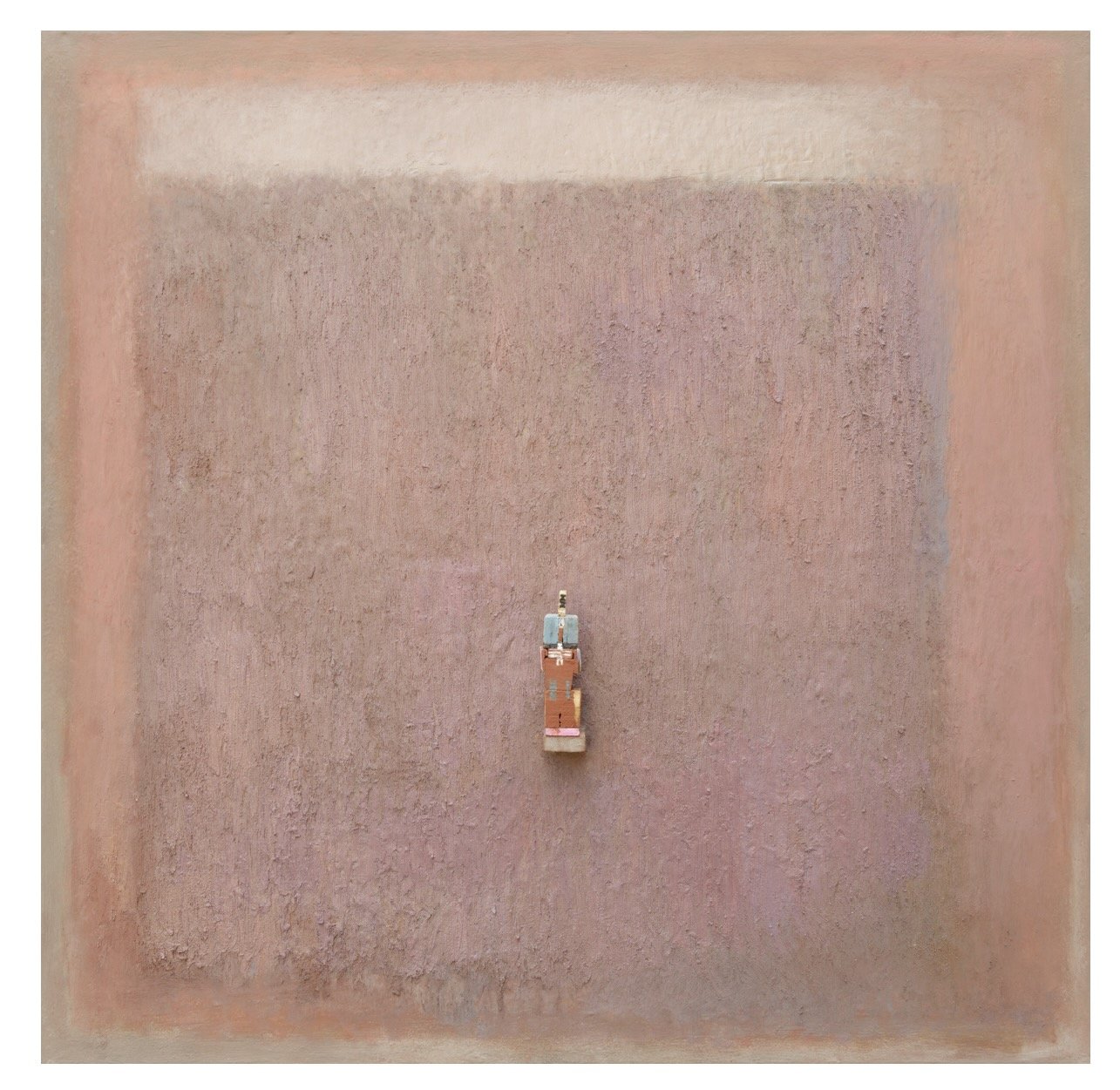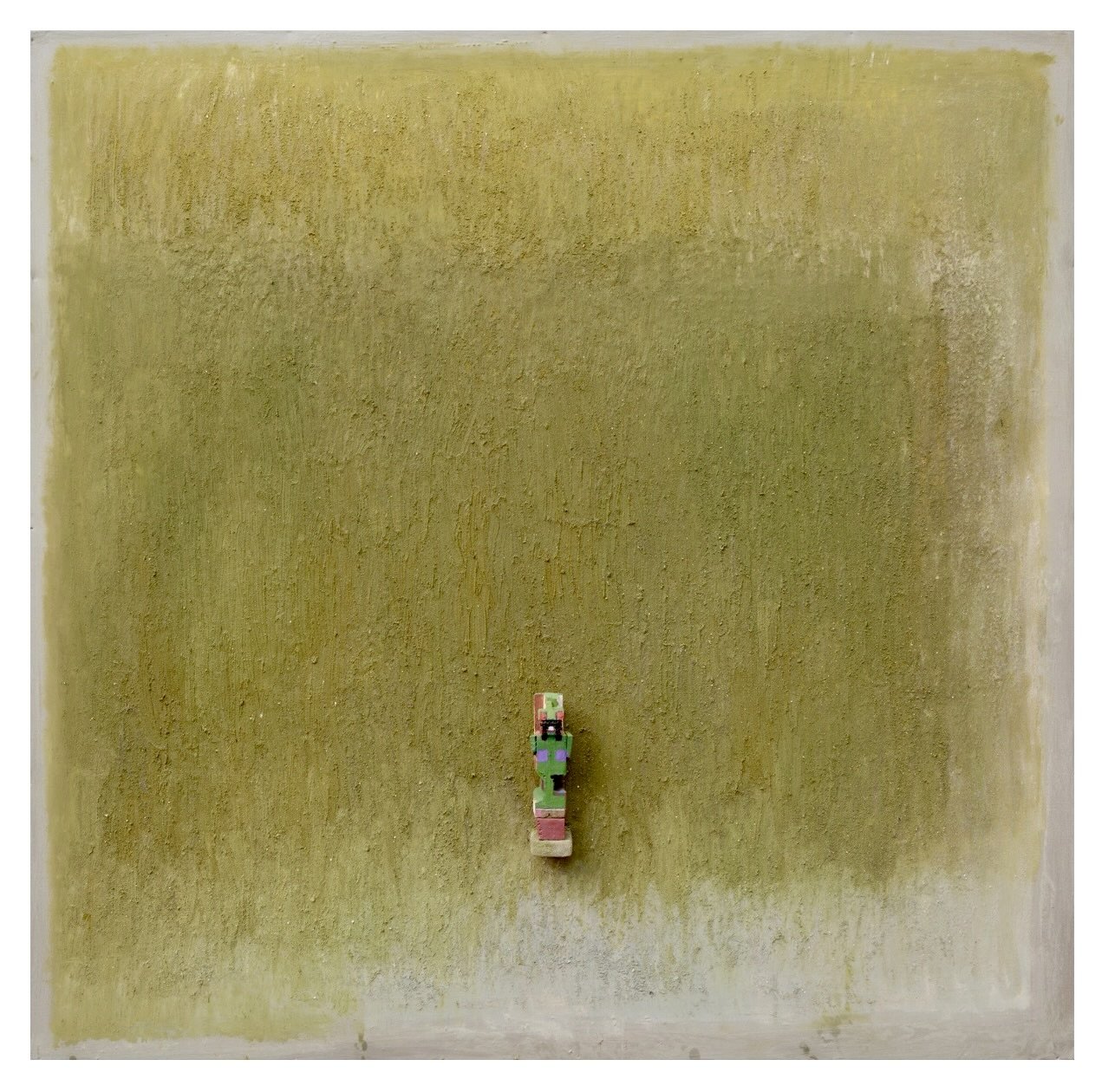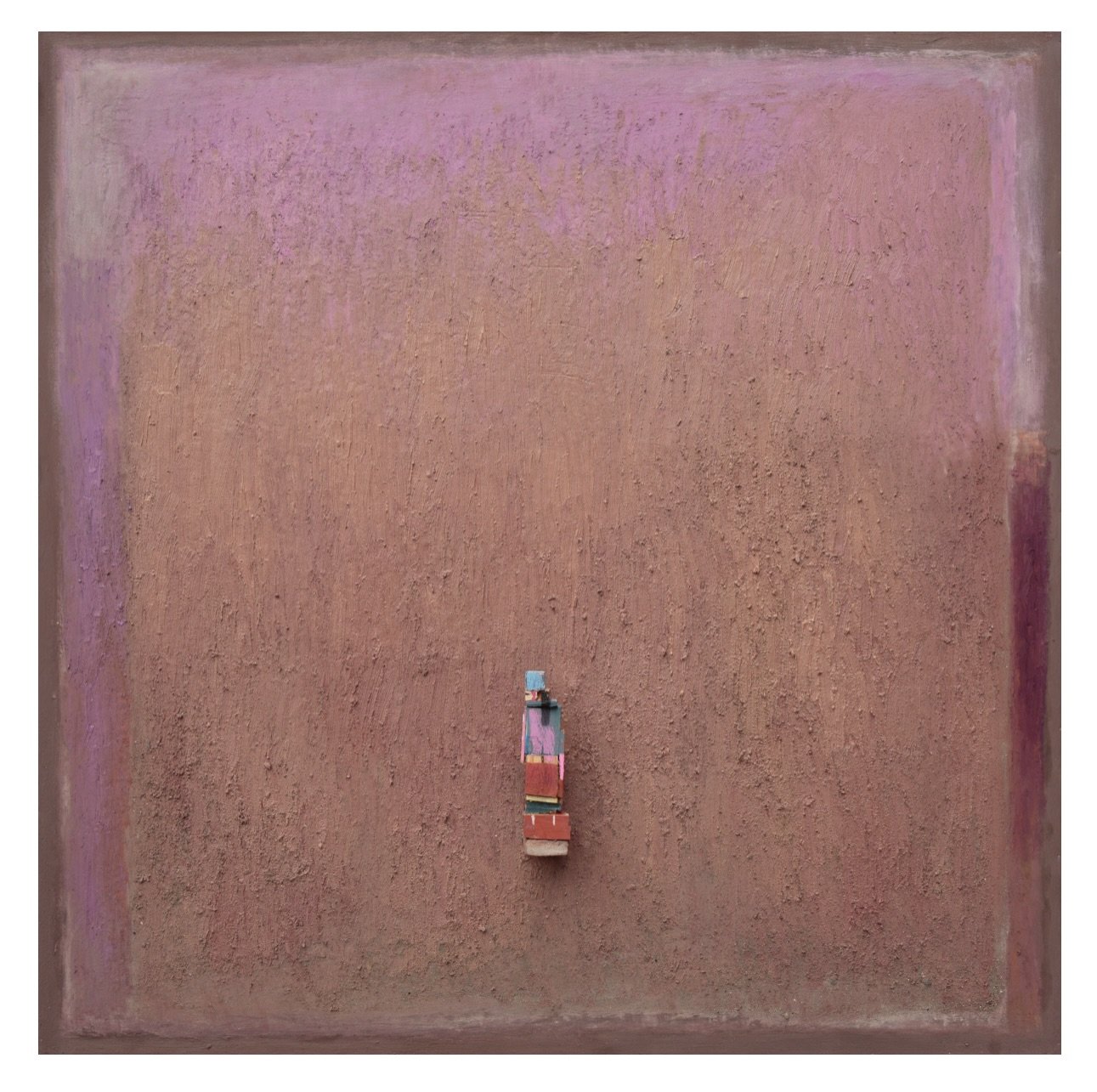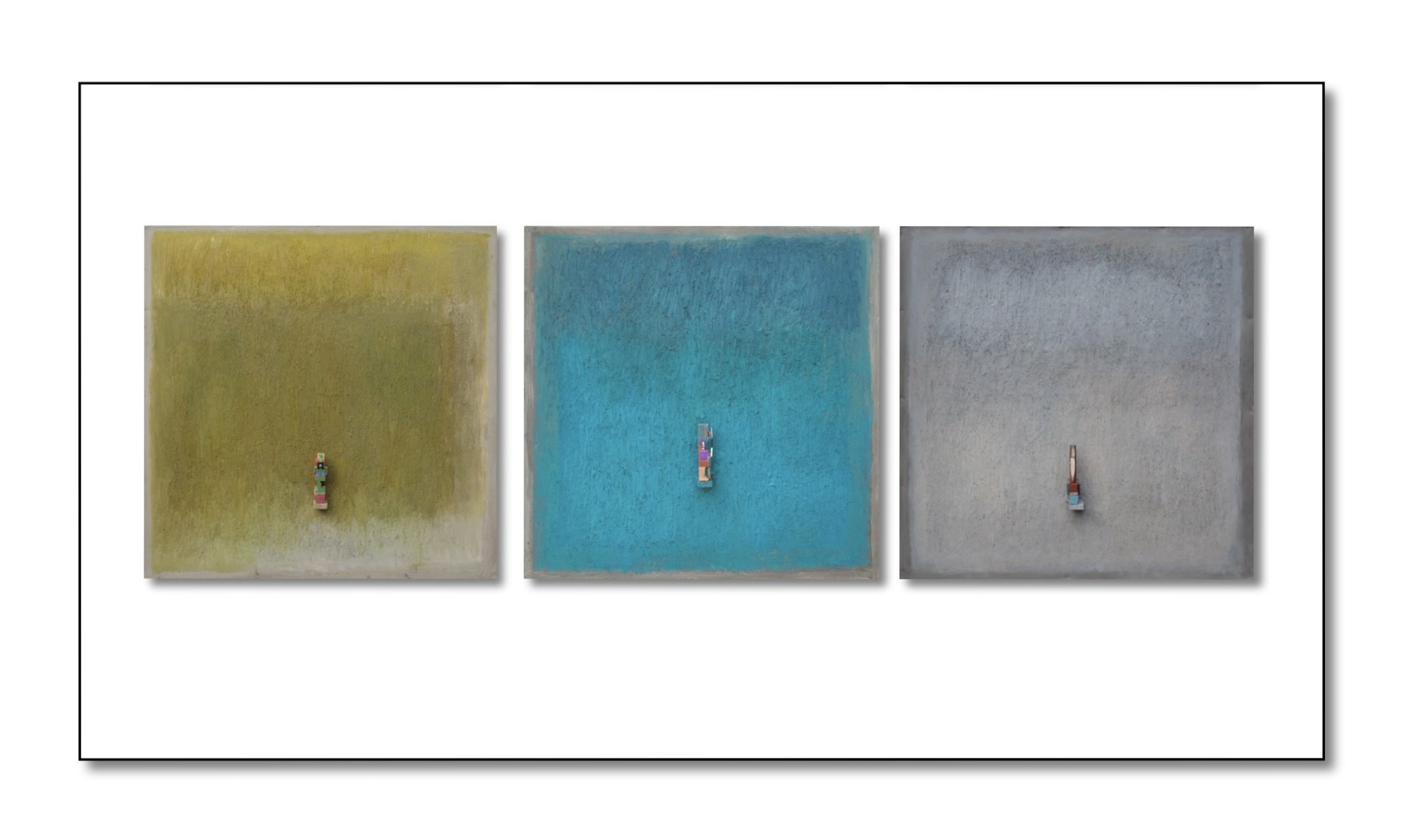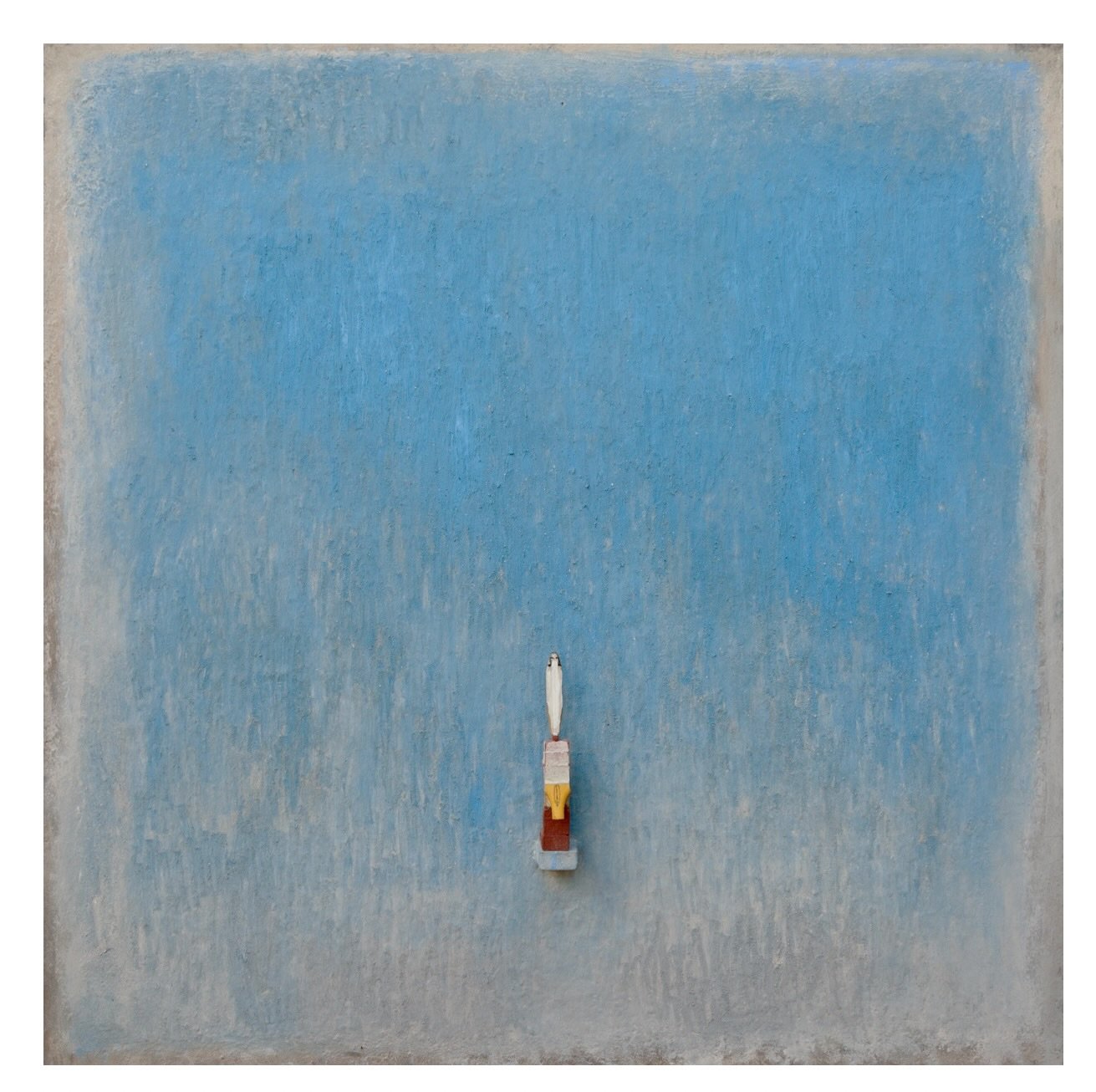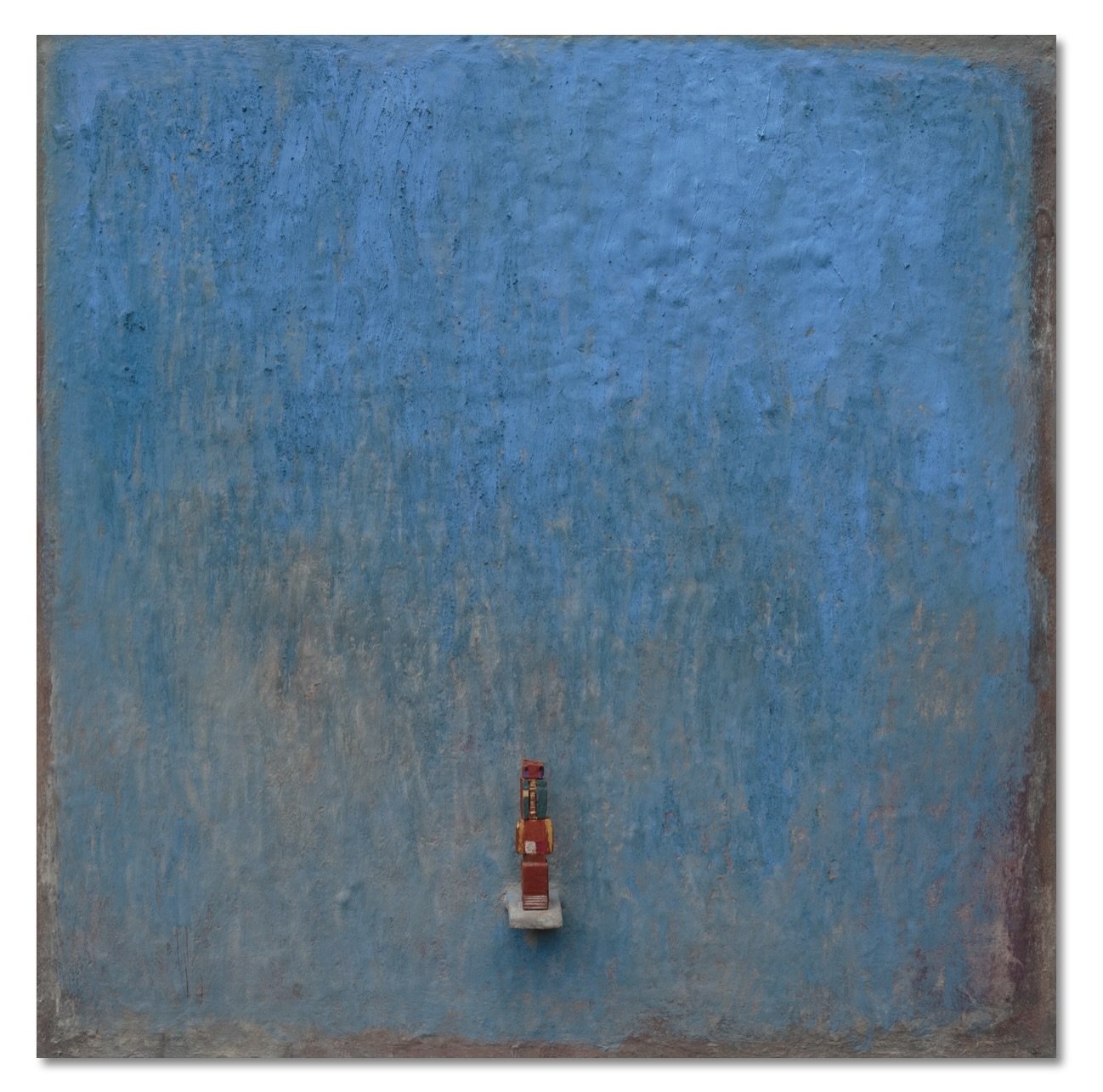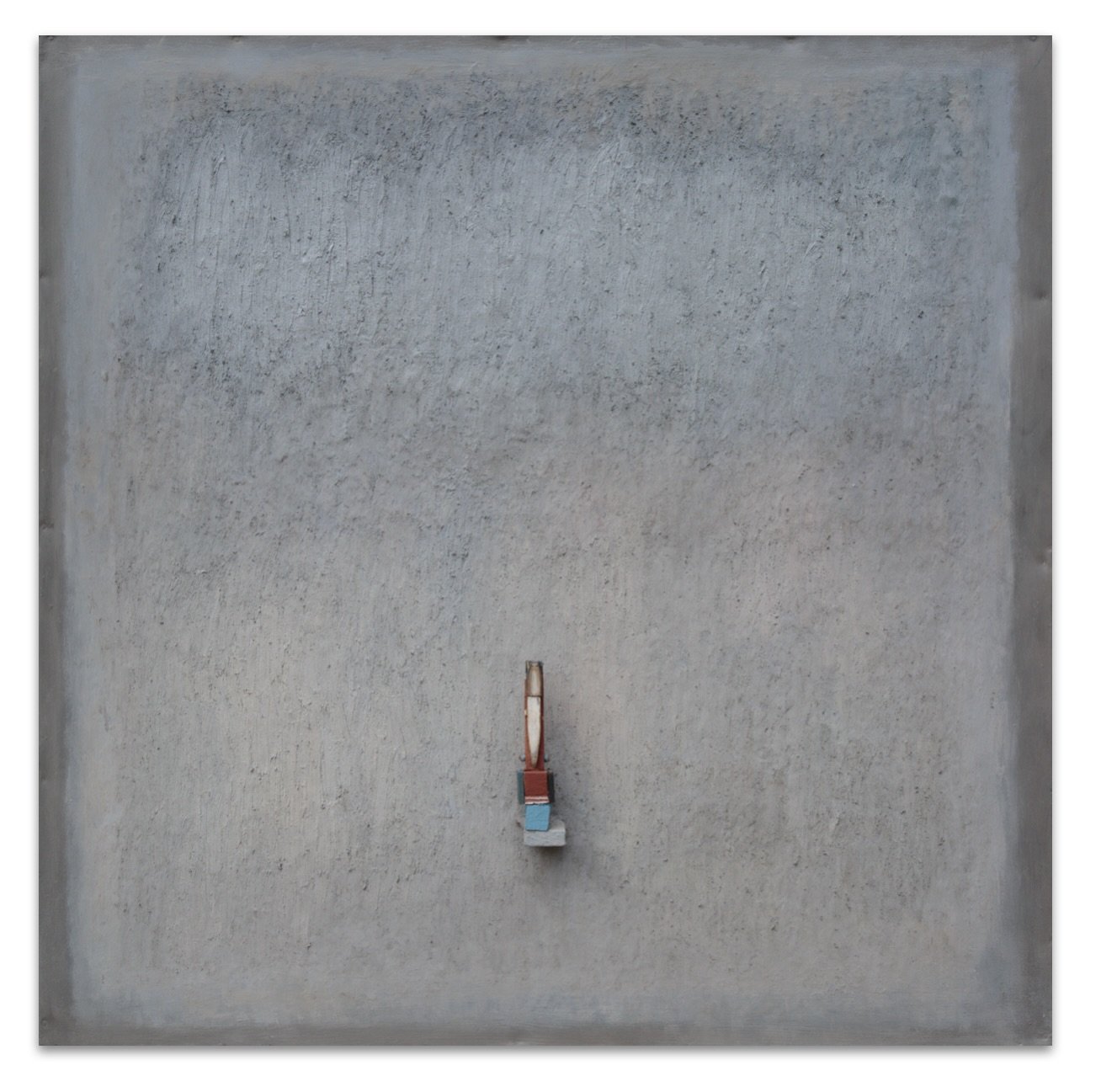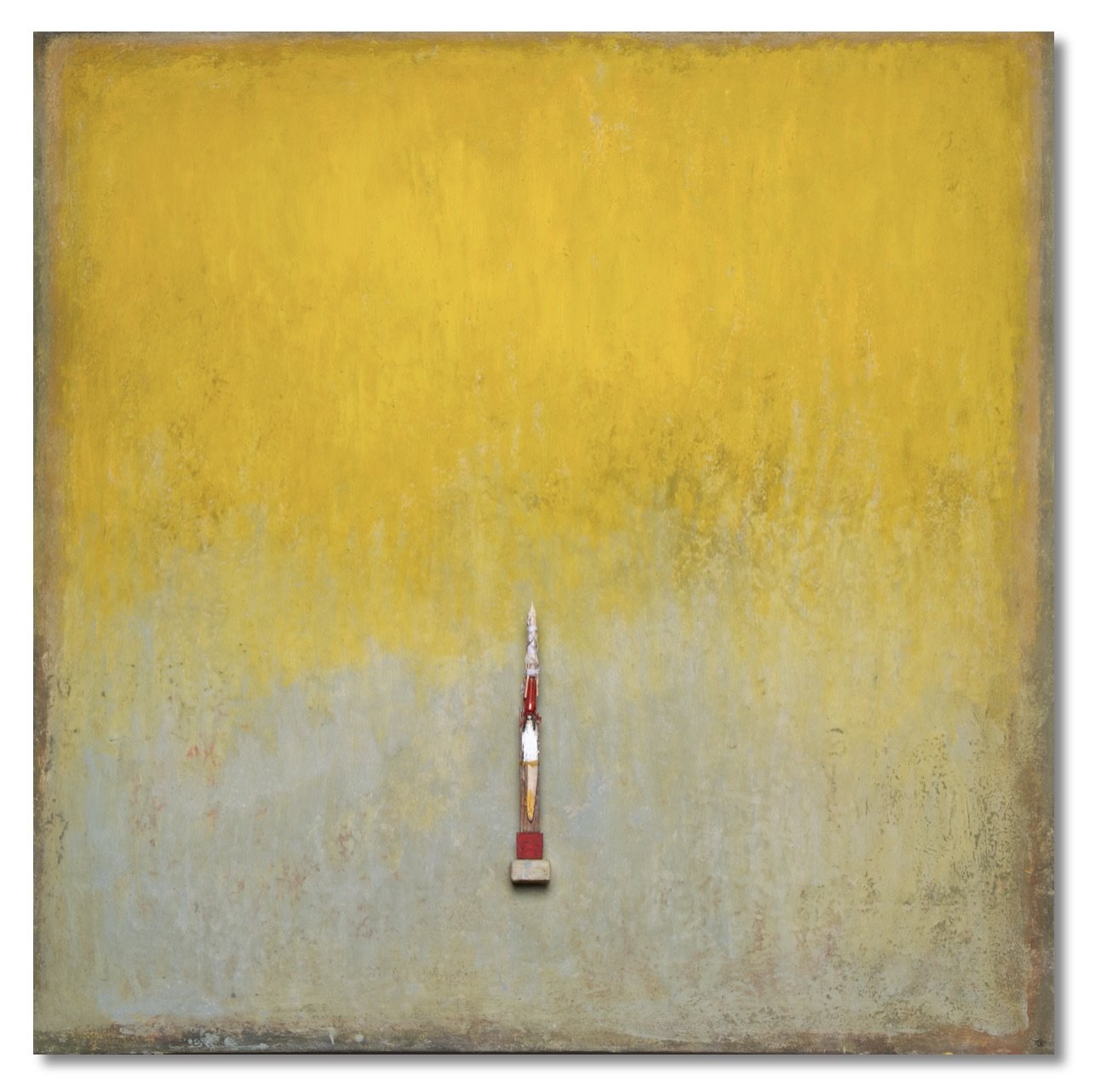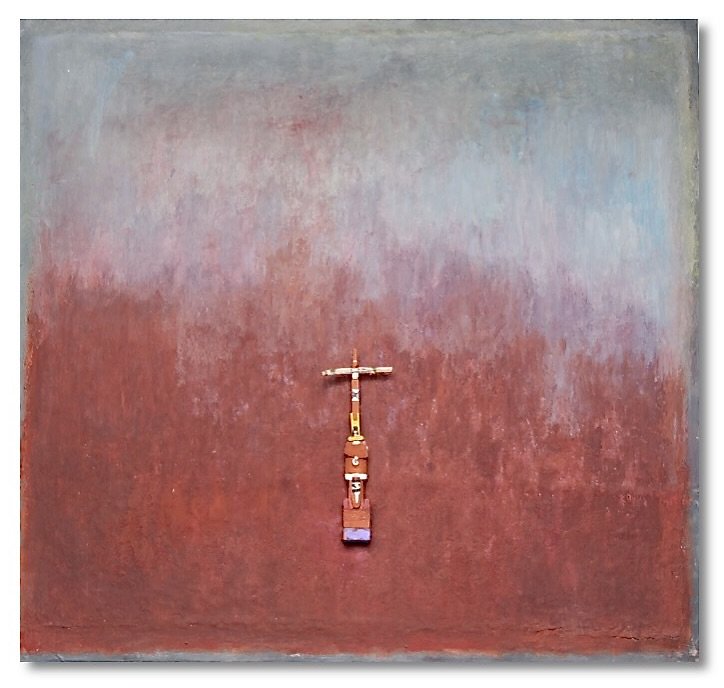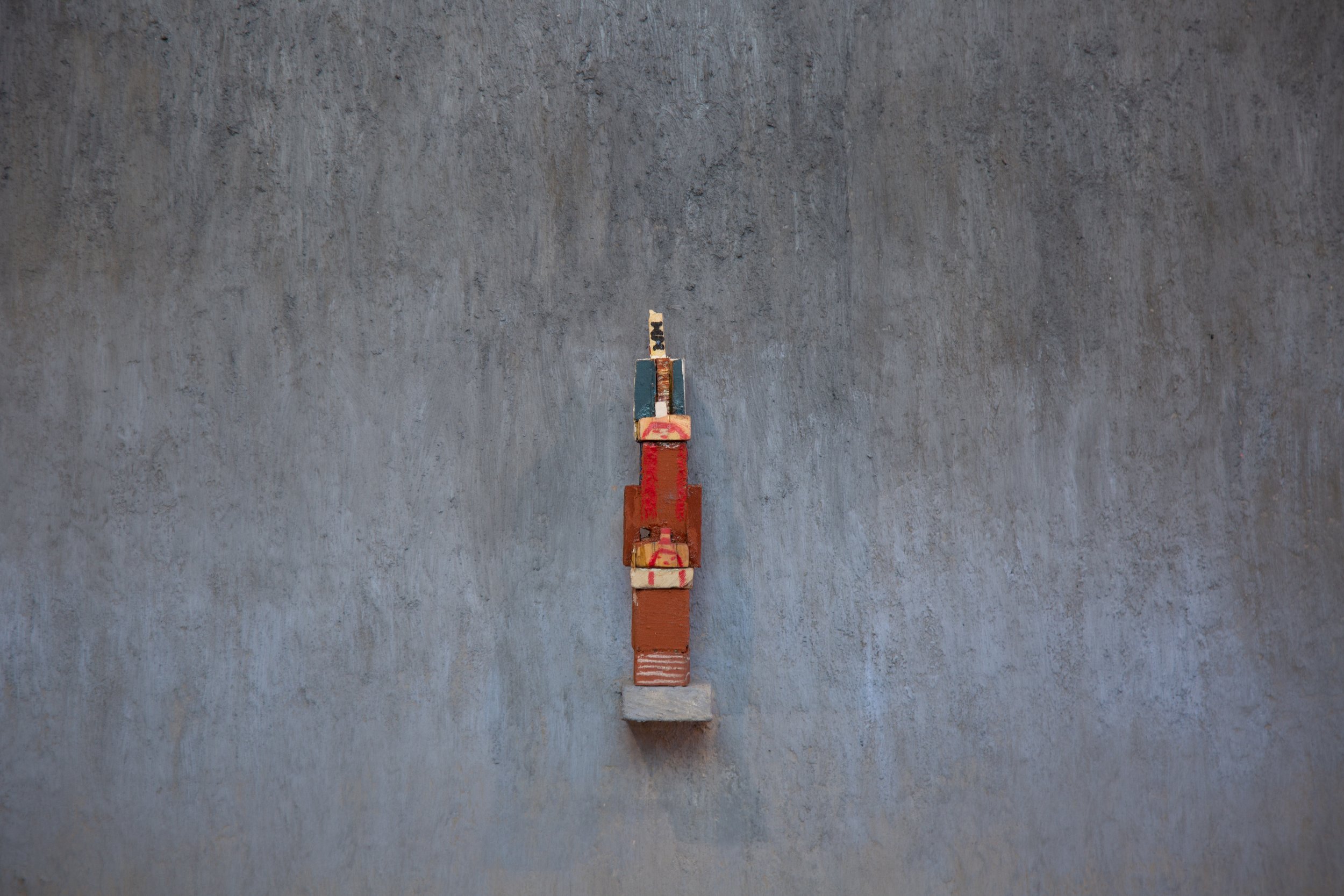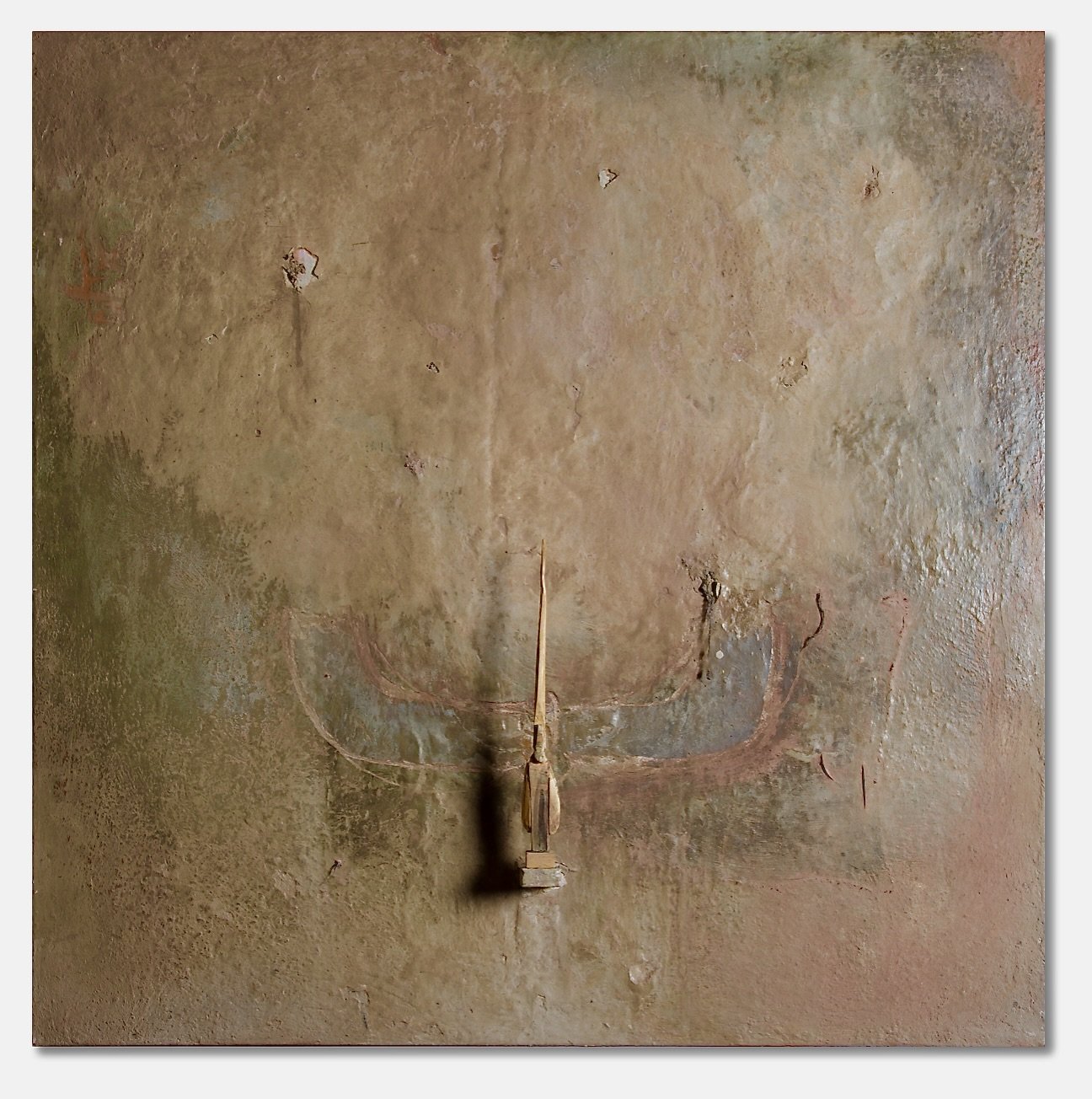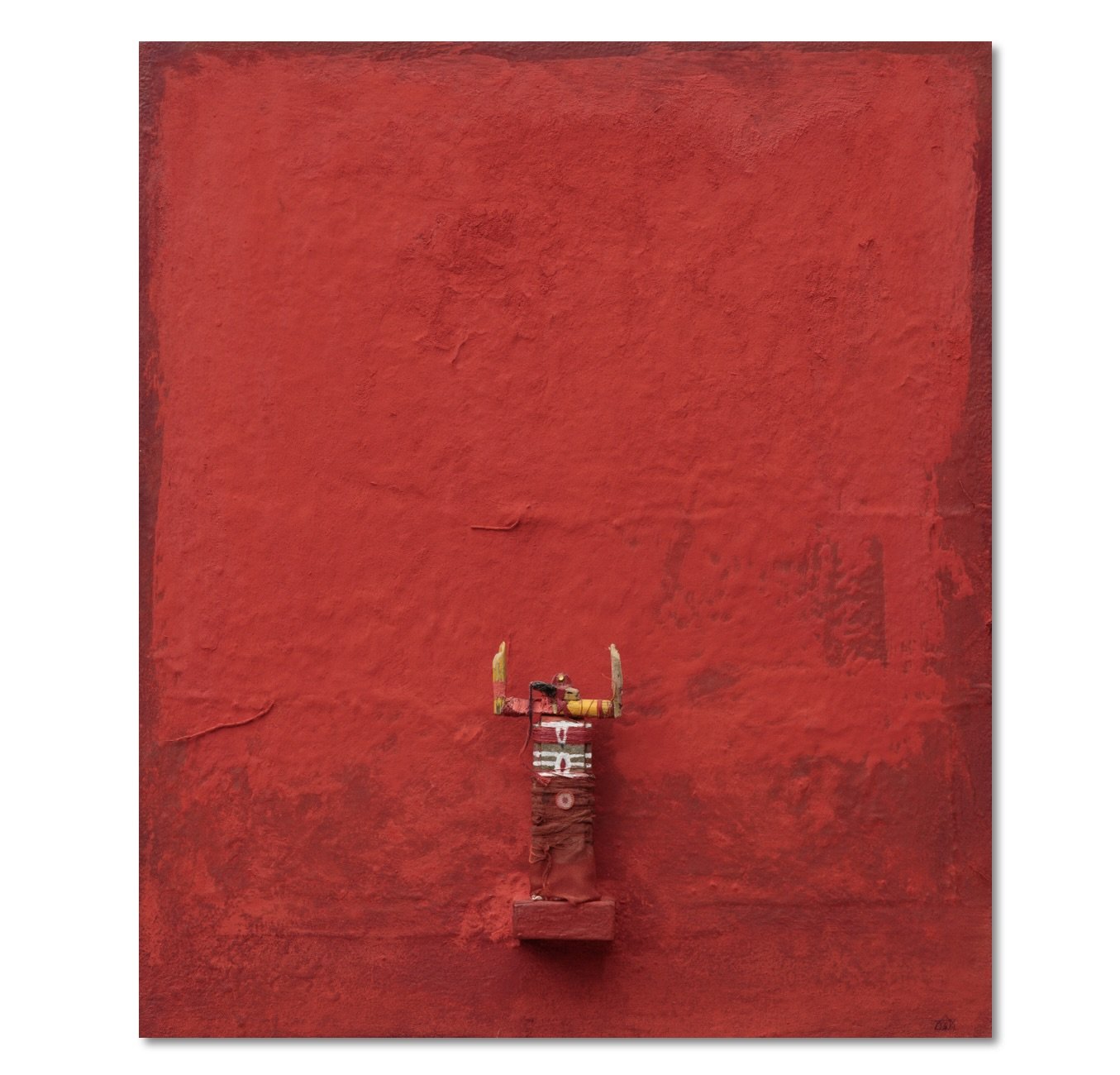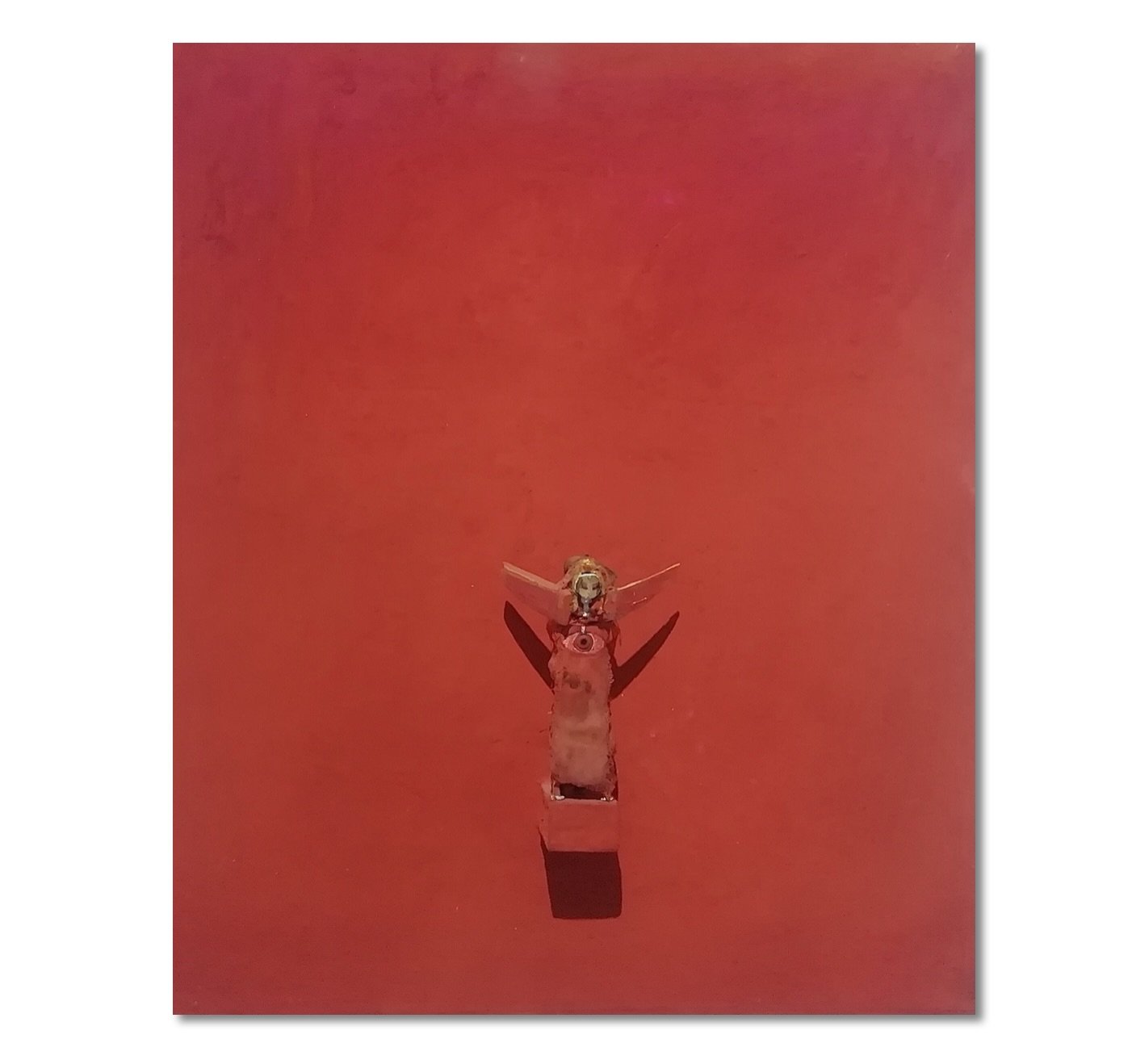Carrés — 2014-2021
statuettes (« 4 pouces »), assemblage de bois, tissus, cordes, ficelles, vieux chiffons, colle, peinture, pyrogravure, crayon
"L’œuvre est un rite, une opération silencieuse où quelque chose derrière soi, on peut dire l’âme, fusionne avec la matière. Chaque couche est une prière, chaque trace, un témoignage entre visible et invisible. Dans le vide, la statuette contemple l’absolu. Ce n’est pas la forme qui compte, mais ce qui la traverse. Ce qui apparaît est un message sans mot, une présence qui échappe au temps."
Réflexions sur une pratique picturale
Dans certaines démarches artistiques, la matière n’est pas simplement un support : elle devient seuil. La superposition des couches, leur fusion lente, les gestes répétés sans but immédiat, forment un langage qui ne cherche ni à convaincre ni à démontrer. Il s’agit d’un cheminement intérieur, où la main suit une nécessité qui la dépasse.
L’usage de la cendre dans cette pratique picturale agit comme un voile et un révélateur. Déposée en fine pellicule sur des couches d’huile, elle est ensuite travaillée à l’aide d’un pinceau minutieux surnommé la patte de chat. Ce geste, précis mais dépourvu de volonté de contrôle, produit une alchimie fragile entre opacité et transparence, surface et profondeur. Rien n’est figé, tout reste sans fin..
Ce qui émerge de ce processus n’est ni une image, ni une idée : Alors c’est quoi? Loin d’un projet dirigé, l’œuvre apparaît lorsque l’artiste s’est détaché de toute attente.L ’émergence de la forme coïncide avec l’acceptation du vide.
Au cœur de ces compositions, une seule figure : une statuette, posée face au regard. Son rôle n’est pas de signifier mais de soutenir le regard là où il n’y a rien à voir. Elle invite à une posture de présence radicale, où l’œuvre ne montre pas, mais fait advenir une propre expérience.
Cette pratique ne s’adresse pas à l’intellect, mais à une mémoire plus ancienne, inscrite dans le corps et le silence. Il ne s’agit pas de comprendre, mais de ressentir. L’espace n’est pas un décor : il est son terrain, activé par l’œuvre, autant que l’œuvre est traversée par lui. Ensemble, ils forment un seuil d’influence.
Ainsi, chaque tableau devient un microcosme instable. Un champ de dissolution, de naissance, de disparition.
Ce que cette peinture propose, au fond, c’est de retrouver un espace intérieur : un lieu sans nom, où la forme s’efface, et où le regard se souvient de ce qu’il savait déjà.
Squares- 2014-2021
+ statuettes ('' 4 inches '', assembling wood, fabrics, ropes, strings, old rags, glue, paint, pirogravure, pencil)
The Artwork as Rite
The artwork is a rite, a silent operation in which something behind the self—one might say the soul—merges with matter.
Each layer is a prayer, each trace a testimony between the visible and the invisible.
In the void, the statuette gazes upon the absolute.
It is not the form that matters, but what moves through it.
What appears is a message without words, a presence that escapes time.
Reflections on a Pictorial Practice
In certain artistic approaches, matter is not merely a support—it becomes a threshold.
The layering of materials, their slow fusion, the repetition of gestures without immediate aim, compose a language that seeks neither to convince nor to explain. It is an inner journey, where the hand follows a necessity greater than itself.
The use of ash in this pictorial process acts both as a veil and a revealer.
Laid as a fine film over layers of oil paint, it is then worked delicately with a brush nicknamed the cat’s paw.
This gesture—precise yet free from the will to control—produces a fragile alchemy between opacity and transparency, surface and depth. Nothing is fixed; everything remains open, in endless suspension.
What emerges from this process is neither an image nor an idea.
So then, what is it?
Far from a directed project, the work appears only when the artist has let go of all expectation.
The emergence of form coincides with the acceptance of emptiness.
At the heart of these compositions stands a single figure: a statuette, placed before the gaze.
Its role is not to signify, but to hold the gaze precisely where there is nothing to see.
It invites a posture of radical presence, where the artwork does not show, but allows an experience to arise.
This practice does not speak to the intellect, but to a more ancient memory—inscribed in the body and in silence.
It is not about understanding, but about feeling.
Space is not a backdrop: it is the ground itself, activated by the work, just as the work is traversed by it.
Together, they form a threshold of influence.
Thus, each painting becomes an unstable microcosm.
A field of dissolution, of emergence, of vanishing.
What this painting ultimately offers is a return to an inner space:
a nameless place,
where form dissolves,
and the gaze remembers what it already knew.

